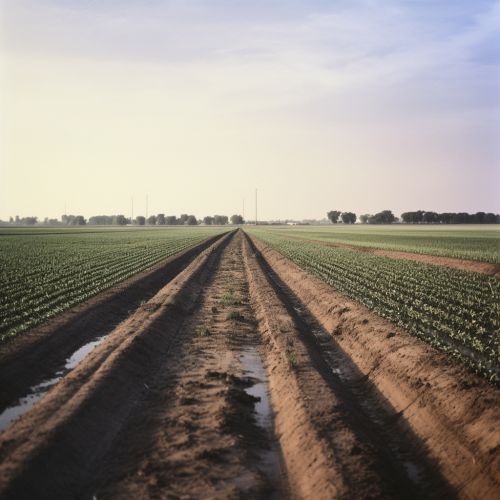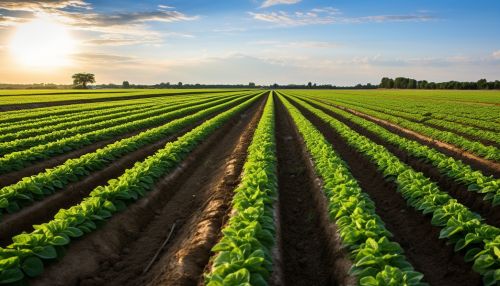Surface irrigation
Introduction
Surface irrigation is a common method of water distribution, where water is applied and distributed over the soil surface by gravity. It is used in agriculture to supplement rainfall and improve crop growth and quality.
Types of Surface Irrigation
There are several types of surface irrigation, including furrow, basin, border, and wild flooding.
Furrow Irrigation
Furrow irrigation is a type of surface irrigation where trenches or "furrows" are dug between crop rows in a field. Water is channeled into these furrows, which fill with water and allow it to infiltrate into the soil and reach the root zone of the crops.


Basin Irrigation
In basin irrigation, the entire field is flooded with water. This method is typically used for rice cultivation, where the paddy fields are kept submerged in water for most of the growing season.
Border Irrigation
Border irrigation involves the flooding of a field divided into long, narrow strips, or "borders". Water is introduced at the upper end of each strip and flows down the slope under the force of gravity.
Wild Flooding
Wild flooding, also known as uncontrolled flooding, is a less efficient method of surface irrigation where water is allowed to flood the field without any form of control or direction.
Advantages and Disadvantages
Surface irrigation has both advantages and disadvantages that must be considered when choosing an irrigation method.
Advantages
Surface irrigation systems are generally less expensive to install and operate compared to other irrigation methods such as sprinkler or drip irrigation. They are also easier to manage and maintain, and can be used in a variety of topographical conditions.
Disadvantages
The main disadvantage of surface irrigation is its inefficiency. A significant amount of water can be lost to evaporation, deep percolation, and runoff. Additionally, it requires a relatively flat land to ensure even distribution of water.
Design and Operation
The design and operation of surface irrigation systems require careful planning to ensure efficient water use.
Design
The design of a surface irrigation system depends on several factors, including the type of crops to be irrigated, the soil type, the topography of the field, and the available water source.
Operation
The operation of a surface irrigation system involves the management of water flow rates, the timing of irrigation, and the maintenance of the system to ensure efficient water use.
Environmental Impact
Surface irrigation can have significant environmental impacts, including water pollution from agricultural runoff, soil erosion, and the depletion of water resources.
